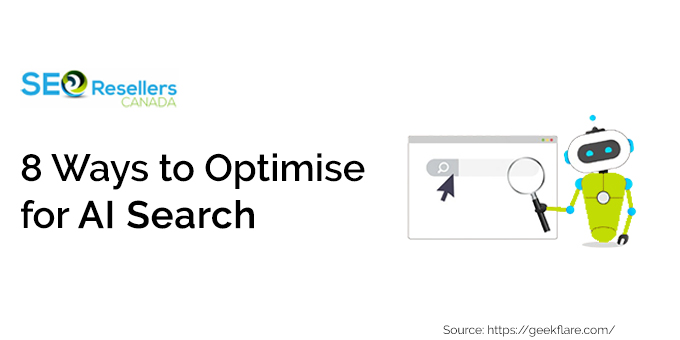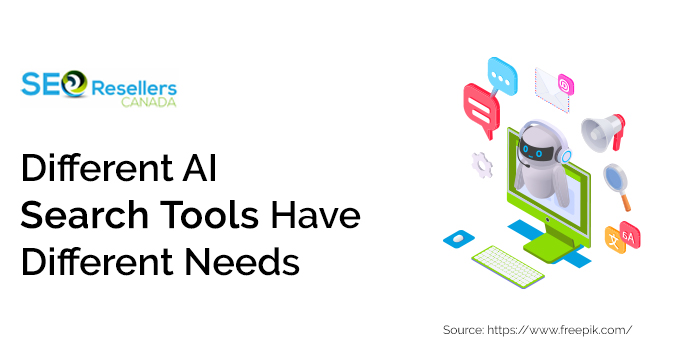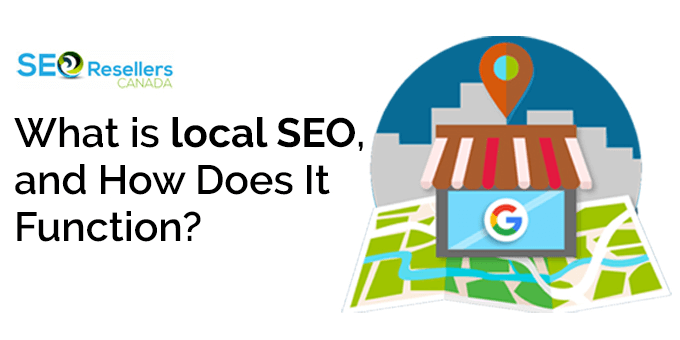Search engines are evolving rapidly. Google’s AI Summaries, ChatGPT, Claude, and Perplexity are revolutionising how we look for information on the internet. However, the traditional SEO principles still apply, but they are insufficient now.
Your content today has to function with both conventional search engines and AI-based tools. This implies that we require new means of AI SEO Strategies to get seen by our content.
This blog will teach you how to get your content noticed in AI search results with easy, step-by-step tips.
1- What Are AI Search Results?

AI search tools don’t simply return links. They provide instant answers by extracting helpful information from numerous sites. These answers assist users in locating what they want more quickly.
Google’s take on this is known as AI Overviews. It was initially tested in the U.S. via Search Labs and then rolled out to more than 120 countries. These AI panels now show up at the top of search results.
AI Overviews gather content from websites and Google’s Knowledge Graph. They provide brief summaries for questions that people frequently ask. This makes it easier for users to understand things quickly. According to ResultFirst, the click-through rate for featured snippets was 42% higher than that of ordinary organic search results.
This transition has sparked both enthusiasm and dismay in the world of SEO. It modifies how sites come into view. The best part? You don’t have to do anything differently. If you write good content and structure it well, you might have your content get into these AI overviews automatically.
2- Why Old SEO Tricks Aren't Enough

Traditionally, writing SEO friendly content was all about having the proper keywords, obtaining backlinks from quality websites, optimising your site for speed, and having solid titles and descriptions. They still work, but they’re not sufficient anymore.
AI search tools view content from a different perspective. They don’t merely scan for keywords—they search for concise answers to frequently asked questions. These tools prefer content that’s easily understandable, well-organised, and clearly written. Moreover, they also pay attention to how authoritative and knowledgeable your content sounds.
Most importantly, AI tools favour content that provides something new or helpful. If your content is similar to all else on the web, it will not get noticed. Hence, you must do more than the basics to actually get noticed.
3- From SEO to GEO

SEO gets you listed in search results. However, GEO (Generative Engine Optimization) gets your content displayed in AI-created answers.
Now, the objective has shifted from “ranking well” to “being cited as a trusted source” by AI algorithms. Therefore, your content needs to be extremely relevant to particular questions and be organised in a manner that is easily read by AI. So, going forward to land in AI overviews, the intent should be on providing plain answers rather than on keyword stuffing.
4- 8 Ways to Optimise for AI Search

4.1- Answer Questions Directly
AI search engines are designed to answer questions. So, your content should do the same. Start with a clear, direct answer to the central question. Then include details, examples, and evidence.
If your site is on “growing tomatoes indoors,” start with a brief answer to that question. Then, dive deeper into tips on soil, light, and water. This aids AI systems in easily locating and applying your answer in their results.
4.2- Structure Content for Simple Reading
The way you structure your content is more important than ever. AI tools read for well-structured content.
Therefore, use clear headings and subheadings in your content. Keep paragraphs short, just 2-3 lines each. Make key points stand out with bold text. Also, add tables when comparing different things. You could also include FAQ sections that give direct answers to common questions. This is because when AI tools see good structure, they’re more likely to use your content in their answers.
4.3- Build Trust (E-E-A-T)
Google and other AI search technologies desire to communicate information from reliable sources. They seek out information that exhibits first-hand knowledge of the subject matter, authority validated by others, and reliable information and sources.
Hence, you can establish trust by including author bios with credentials and referencing credible sources for facts. Use personal experience where appropriate, along with links to authority sites when necessary. You can even use data and research to back up your key points.
4.4- Create Short Summaries
AI tools usually search for good summaries to reuse. So, make it simple by inserting a brief summary at the beginning of your content. Also, put in “Key Takeaways” sections where applicable. In the end, finish with a concise conclusion repeating your main points.
Such summaries assist AI tools to get quickly what your content is all about and extract the most appropriate pieces for their responses.
4.5- Use Schema Markup
Schema markup enables AI to better understand your content. It is akin to providing AI with a map of the content on your page.
Useful schema types are FAQ Page schema for Q&A content and How To schema for step-by-step instructions. Product schema is best for product content, and Article schema is best for news and blog content. Keep in mind that schema won’t ensure inclusion in AI results, but it facilitates AI to incorporate your content in their answers.
4.6- Target Questions, Not Just Keywords
Rather than just emphasising keywords such as “best running shoes,” target specific questions people ask. So, consider questions such as “How do I pick running shoes for flat feet?”. It can even be “What shoes are best for marathon training?” or something along that line.
These topic questions mirror the way people converse with AI search engines and raise your chances of being part of AI answers.
4.7- Include Helpful Visuals
Good visuals help both users, and AI understand your content better. So, use charts and graphs to show data clearly. You should also add images that explain key concepts and include screenshots when creating tutorials. Creating simple infographics for complex topics is always helpful as well.
However, just be sure to add alt text to all images so AI can understand them. Plus, keep file sizes small for fast loading. And make sure all visuals relate directly to your content.
4.8- Update Content Regularly
AI search tools prefer newer, updated content. Therefore, older information is less likely to be featured in their answers.
You can create a schedule to go over and refresh your crucial content. This means including new data and statistics as they become available. You should also delete any past information that’s no longer accurate. Keep in mind that new content informs AI that your page is up-to-date and worth referencing.
5- Different AI Search Tools Have Different Needs

AI tools are changing how people find answers online. Each AI tool shows different kinds of results. So, knowing what each one likes helps your content show up more often. It also helps more people see your website.
Let’s break down how tools like Google AI Overviews, ChatGPT, Claude, and Perplexity work. You’ll also learn what kind of content works best for all of them.
5.1- What Google AI Overviews Want
Google AI Overviews provide quick responses at the very top of the search. Such responses tend to display:
- A brief quote from a site
- A link to the site
- A photo or product recommendation
If you’d like your page to be listed here, keep your page clean and properly formatted.
You should also give concise answers to questions individuals are looking for. Plus, use headings so people can easily scan your information. The goal is to ensure your information provides value and is readable.
5.2- What ChatGPT and Claude Seek
ChatGPT and Claude operate slightly differently. They don’t pull just one response. They read on numerous pages. Then, they compile a complete response for the user. In a study by ProRankTracker, only 45% of the top-ranking Google pages were shown in the ChatGPT web results for the same search term.
Therefore, in order to have your content noticed by these tools, you must make something unique. Here’s the way:
- Discuss real experiences
- Say new things that no one else has mentioned yet
- Provide examples, tips, or stories
- Respond to questions in plain and honest language
These tools prefer content that sounds authentic. They prefer unique perspectives. Try to describe things in your own words. Do not simply imitate what everybody else is talking about.
5.3- What Perplexity Likes in Content
Perplexity prefers data, research, and factual content. This is because Perplexity reveals answers from sources that are precise and detailed.
So, if you’d like to appear in Perplexity’s results:
- Use numbers, facts, and sources
- Create lengthy, detailed guides
- Insert steps whenever you’re describing something
- Include links to your sources if you can
This tool prefers serious content. But you should still write in plain language. Make your steps simple to follow. Split big ideas into little pieces. Use short paragraphs and lists.
5.4- Create Content That Works with All AI Tools
You can’t create one kind of content for all tools. But there are some things that work for all of them:
Here’s what you can do:
- Answer genuine questions people search
- Use plain, short headings
- Use simple language
- Insert facts, advice, and illustrations
- Update existing entries with fresh details
- Develop FAQ sections
- Provide real-life stories whenever possible
All AI tools prefer usable content. They do not concern themselves with complex terms; instead prefer clear and useful answers.
6- Success Strategies You Can Use Now

For fresh content, begin with researching what questions are being asked on your subject. Write in-depth content that completely answers all of these queries. Also, make sure it’s clear and easy to read.
- Research popular questions pertaining to your subject.
- Write content that gives complete answers to these questions.
- Utilise clear format with useful headings to keep content readable.
- Use straight answers to popular questions.
- Add facts, examples, and graphics to illustrate points.
To refresh old content, see what AI sources are currently saying on your subject. See gaps or voids where you can fill them. You can even include clear, direct answers to popular questions. Also, update any outdated data or examples to bring them up to date.
7- Measuring Success in AI Search

In order to really grasp your performance in AI search, it’s critical to monitor more than mere old-school SEO metrics. Here’s how to measure success in this changing environment.
7.1- Success in AI Search Is Not the Same as SEO
Boosting visibility in AI search is not like winning in traditional SEO. You must examine new means to discover how your content performs. Older practices still work, but they no longer represent the complete picture.
7.2- Traditional Metrics Still Matter
You should continue to monitor organic traffic and keyword rankings. These indicate how well your pages are ranking on search engines. Pages that rank high are more likely to be captured by AI tools. Other useful indicators are how many individuals click on your page and how long they remain.
7.3- New AI-Specific Metrics to Watch
AI search introduces new metrics to measure. One is how frequently your site is being mentioned in AI responses. Look if your brand name appears in AI-generated results. You should also check if traffic is coming from tools such as ChatGPT or Google AI Overviews.
7.4- How to Track Performance
New tools are being developed to monitor AI searches more effectively. But for the time being, there are some easy things you can do. Search your keywords in AI tools and see if your site is referenced. Monitor for any unusual variations in your traffic. Also, monitor where your brand appears throughout the web.
8- The Future of AI Search

AI search remains in its infancy and is developing fast. As more people rely on AI tools for their answers, the amalgamation between conventional search and AI results is likely to become stronger. This will render AI search an even more vital resource for discovering information.
In the near future, search engines will favour more high-quality, reliable content. Content with mere keyword stuffing and no substance will become useless. Search engines prefer content that actually answers user queries and shares valuable insights.
The best news is that useful, well-organised content performs well in both traditional and AI searches. Emphasising delivering actual value to users, rather than optimising for keywords, will keep your content relevant. The trick is to evolve with these changes and continue producing content that actually helps people.
9- Take Action Now
AI search is altering the way humans search for information. To remain seen, you must refresh your content SEO Strategies. Begin by discovering your most vital content pieces. Review how they fare in AI search tools. Also, refresh them with more explicit answers and improved structure. Include FAQ sections where applicable. And establish stronger trust signals across.
The sites that adjust to AI search today will have a huge advantage as more and more users seek out AI for answers. However, don’t forget that success in AI search is about producing useful, well-organised content that definitively answers questions for users. Concentrate on that, and you’ll be set for the future of search.
















